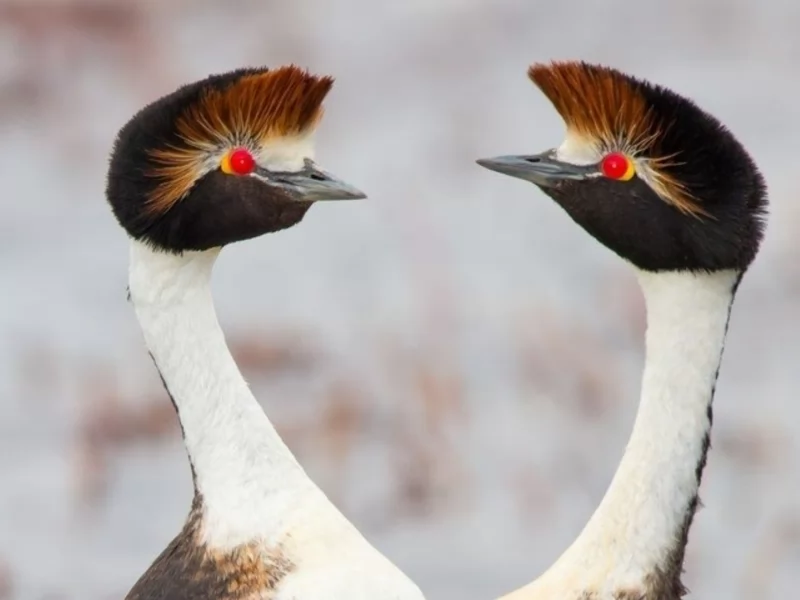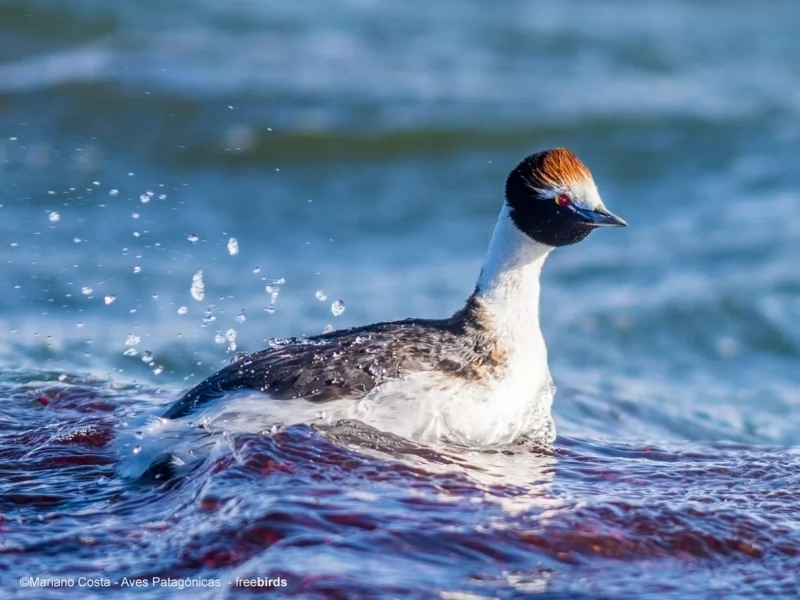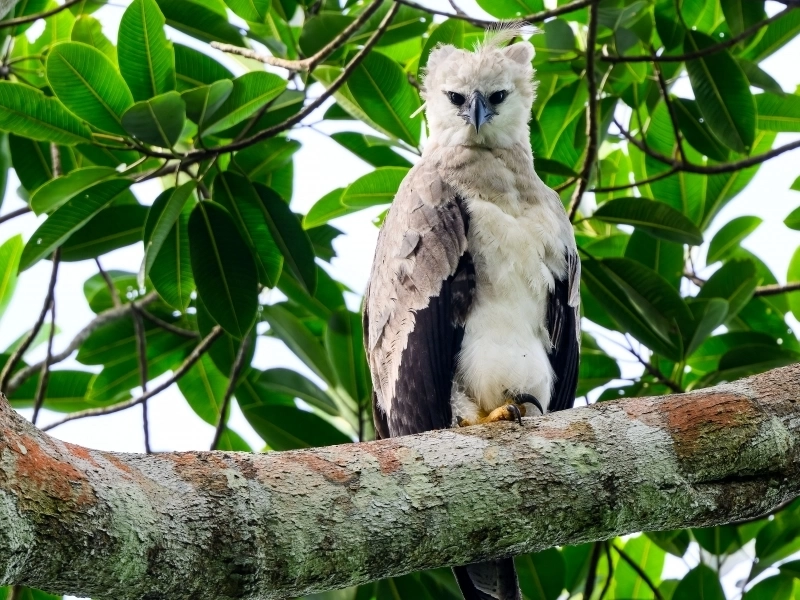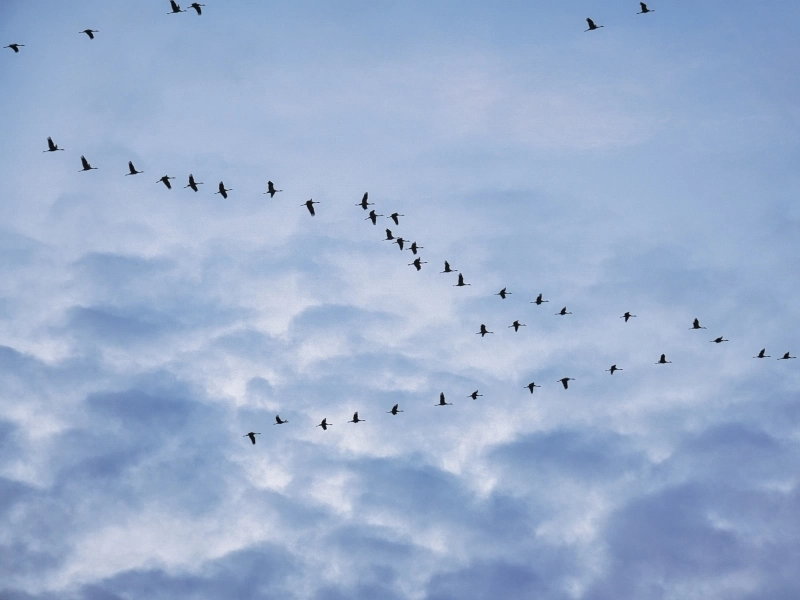News and Testimonials

Surprise in the south
For the first time in four years, two chicks of a critically endangered bird were born
A few hours before noon last Friday, the Juan Mazar Barnett Biological Station received a message: two hooded grebe chicks had hatched in lagoon 14, which is located on the plateau of Lake Buenos Aires, in the province of Santa Cruz. The news, which was sent through an emergency satellite system, was more than expected: it had been four years since this critically endangered seabird had not reproduced.
“Each summer is a challenge in itself. It had been a long time since we had a single colony, but this year there are already four that are active, with chicks that hatched, with the technicians working without major logistical problems and with a chick in rearing”, says Ignacio 'Kini' Roesler, coordinator of the Patagonia Program of Argentine Birds and researcher of the Conicet in the Bariloche Foundation.
Climate change is the main cause that prevents the reproduction of this species. The increasingly irregular snowfalls, the droughts in the lagoons and the variation in temperatures affect not only its ecosystem, but also the vinagrilla, an aquatic plant used by grebes to build their nests. Without it, its reproduction is impossible.
In addition to this global threat, this waterfowl is also threatened by the American mink, its main predator; the kelp gull, which attacks from the air and feeds on its eggs and the rainbow trout, which prevents the growth of the vinaigrette.
For this reason, as they do every summer since the Macá Tobiano Project was implemented in 2010, the Colony Guardians – a team of specialists in species management and conservation – settle, together with volunteers from various parts of the world, with the task of preserving the specimens of grebe grebe that today do not exceed 800.
It is not an easy task. “They live in the middle of nowhere, camping on the plateau that is located 1,000 meters above sea level. The weather is very windy and cold. At night, they have sub-zero temperatures,” says Roesler. And his task is also particular. "They can't take their eyes off the lagoon because a kelp gull or an American mink may appear," he adds.
Human-created infrastructure also adds to the long list of threats to this species. The most alarming is the construction of two dams on the Santa Cruz River that could mean the irreversible extinction of this species.
According to an environmental impact report, both dams “produce impacts that are reflected upstream, in the formation of reservoirs as a result of the flooding of riverside and terrestrial environments; as well as downstream, with the change in water flows and consequent alteration of nutrient deposits or natural flood cycles”. In turn, he states: "The predictable impacts will be caused by the interruption of the dispersion of fauna due to the dam itself, but also by the destruction of 51% of the environments."
A Patagonian symbol
Unknown until relatively recently (it was discovered in 1974), the hooded grebe has plenty of reasons not to go unnoticed. Its red eyes, its characteristic orange plume and its white, gray and black plumage hide its smallness – it weighs only half a kilo – and its scarce 30 centimeters in size. Exotic, charismatic and sociable, it attracts bird specialists from all over the world who watch enthralled by its colorful courtship “dances”.
For Roesler, the attractiveness of this species should be used to reinforce the importance of conserving it and therefore, they seek to make it the symbol of national conservation. “It is important to have symbols. For this reason, we want to ensure that when people mention the hooded grebe, they think of conservation, as is the case with the panda bear,” he says.
Over time, the hooded grebe became an emblematic symbol of Santa Cruz. In addition to declaring it a Provincial Natural Monument, the image of this characteristic animal can be seen plotted in groups and a tourism agency, a store, a beer and even a rugby team have been baptized with its name. A festival is even held every August in Río Gallegos to express a successful nesting and breeding season.
“People have taken it as an emblem of the province. There is a lot of identity with the hooded grebe. It is a local symbol. It's very rare that someone in Santa Cruz doesn't know him,” says Roesler.
Source: https://www.lanacion.com.ar/sociedad/sorpresa-en-el-sur-por-primera-vez-en-cuatro-anos-nacieron-dos-pichones-de-un-ave-en-peligro-critico-nid27012022/







